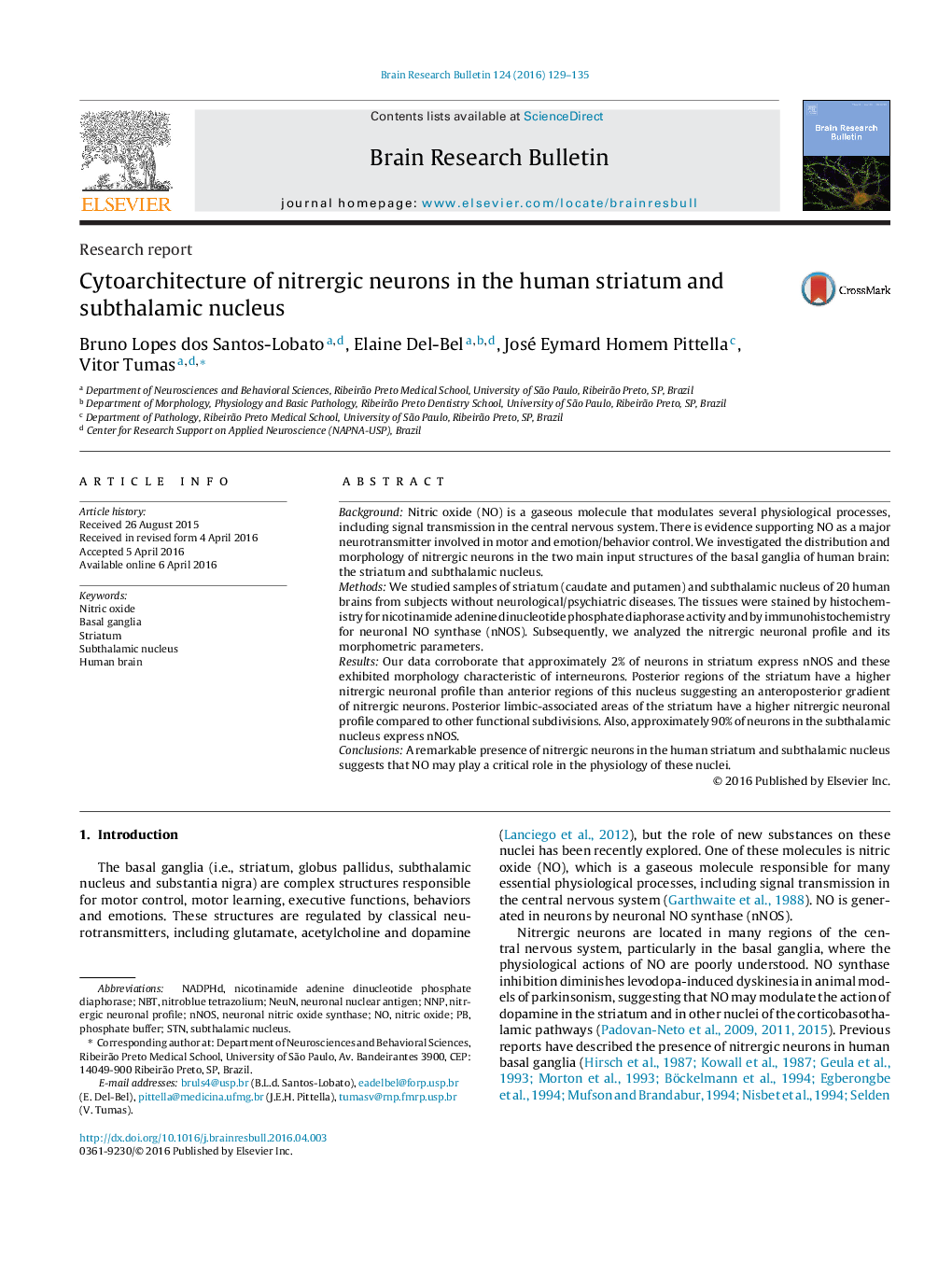| Article ID | Journal | Published Year | Pages | File Type |
|---|---|---|---|---|
| 6261583 | Brain Research Bulletin | 2016 | 7 Pages |
â¢Nitric oxide modulates basal ganglia circuitry.â¢Nitrergic neurons in the human striatum and subthalamic nucleus were analyzed.â¢An anteroposterior gradient of nitrergic neurons in the striatum was found.â¢Approximately 90% of neurons in the subthalamic nucleus express neuronal nitric oxide synthase.
BackgroundNitric oxide (NO) is a gaseous molecule that modulates several physiological processes, including signal transmission in the central nervous system. There is evidence supporting NO as a major neurotransmitter involved in motor and emotion/behavior control. We investigated the distribution and morphology of nitrergic neurons in the two main input structures of the basal ganglia of human brain: the striatum and subthalamic nucleus.MethodsWe studied samples of striatum (caudate and putamen) and subthalamic nucleus of 20 human brains from subjects without neurological/psychiatric diseases. The tissues were stained by histochemistry for nicotinamide adenine dinucleotide phosphate diaphorase activity and by immunohistochemistry for neuronal NO synthase (nNOS). Subsequently, we analyzed the nitrergic neuronal profile and its morphometric parameters.ResultsOur data corroborate that approximately 2% of neurons in striatum express nNOS and these exhibited morphology characteristic of interneurons. Posterior regions of the striatum have a higher nitrergic neuronal profile than anterior regions of this nucleus suggesting an anteroposterior gradient of nitrergic neurons. Posterior limbic-associated areas of the striatum have a higher nitrergic neuronal profile compared to other functional subdivisions. Also, approximately 90% of neurons in the subthalamic nucleus express nNOS.ConclusionsA remarkable presence of nitrergic neurons in the human striatum and subthalamic nucleus suggests that NO may play a critical role in the physiology of these nuclei.
